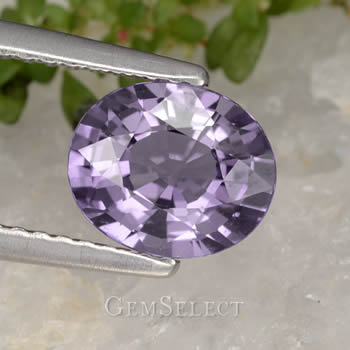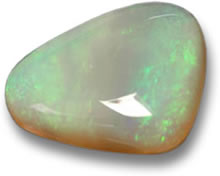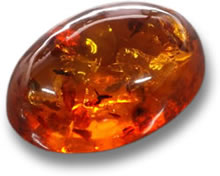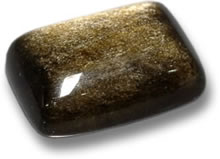Your Details
Your Details
|
Reviewed By Andreas Zabczyk
Singly Refractive Gemstones
Cubic Crystal Spinel
One of the signature properties of a gemstone is its refractive index. When light passes from one medium to another, the light rays are refracted or bent at an angle. It's why a straw standing in a glass of water appears to be bent - light travels more slowly through water than through air. Each substance has its own refractive index, and this is quite useful for gemstone identification. The refractive index of a particular material is simply expressed as the speed of light in a vacuum divided by the speed of light through the particular material. In the case of water, the refractive index (RI) is 1.33. For diamond, the RI is in the range of 2.417 to 2.419. 
Amorphous Opal
Certain gemstones exhibit singe refraction, meaning they have only one refractive index. On the other hand, the majority of gemstones are doubly refractive, possessing two distinct refractive indices. When light enters a doubly refractive gemstone, it splits into two beams, each moving at a different speed and following a separate path within the crystal. Birefringence quantifies the disparity between the two refractive indices in doubly refractive gems, with values ranging from as low as .003 to as high as .287. Relatively few gemstones are singly refractive. The best known ones are diamond, garnet and spinel. Although many people think these are the only singly refractive gems, the list is quite a bit longer, and can be organized into several different categories: Cubic Crystals
Organic Natural Amber
Cubic solids are symmetrical and have three equal and perpendicular axes. For this reason they refract light in all directions at the same velocity. Cubic crystals include not only diamond, garnet and spinel, but also fluorite, boleite, lapis lazuli, sodalite, hackmanite and pyrite. Gold and silver are also cubic crystals. Amorphous GemstonesAll of the gems that are amorphous - having no definite crystal structure - are singly refractive. There are several subcategories of amorphous gems; opals, natural glass, and organic gems. All the members of the opal family - common opal, precious opal, fire opal and boulder opal - are composed of hydrated silicon dioxide, a kind of hardened jelly. Opals have a significant water content; usually between 3 and 10%. 
Natural Glass Obsidian
The natural glasses include obsidian and moldavite. They are amorphous because they formed under conditions of rapid cooling, which prevented crystal growth. The organic gems include amber, jet, ivory, pearl and ammolite. Amber and jet are derived from plant materials, while ivory, pearl and ammolite have their source in the animal kingdom. Some gems that appear to have an animal source, such as fossilized coral or petrified wood, are actually crystalline, since the original organic material has been replaced by jasper or chalcedony. |
